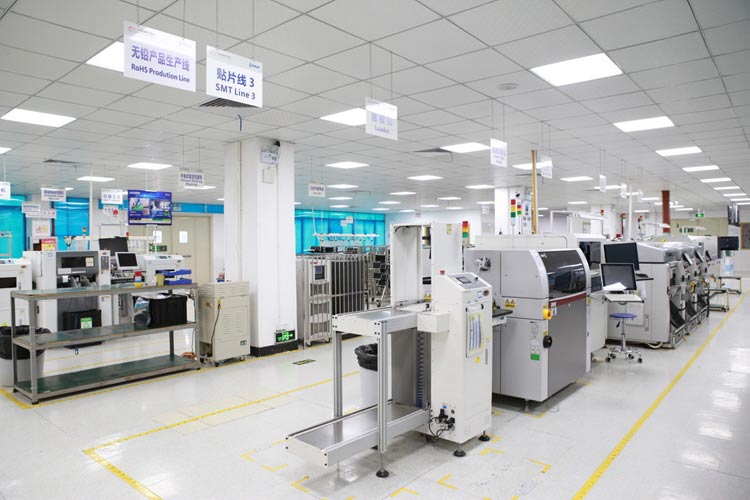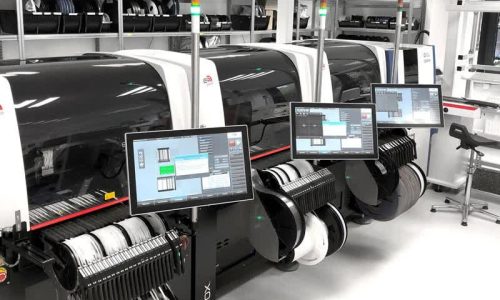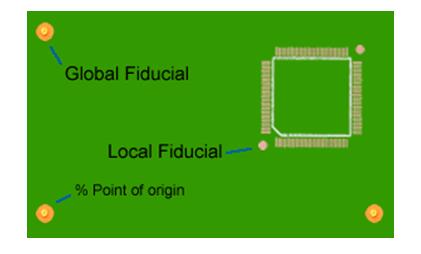In today’s tech-driven world, electronic products are an integral part of our daily lives. Behind the scenes, printed circuit boards (PCBs) serve as the brains of these electronic devices, and the demand for PCBs is on the rise. PCB manufacturers are constantly striving to increase their production output, and one effective way to achieve this is by incorporating advanced Surface Mount Technology (SMT) machines into their assembly lines. These machines enable the fast and precise assembly of even the tiniest electronic components. In this comprehensive guide, we’ll explore the various types of SMT machines, their functions, and provide valuable insights on how to choose the right machines for your production line.
Understanding the Role of Different SMT Machines in PCB Assembly
Let’s break down the PCB assembly process, highlighting the equipment used at each step:
1. The Solder Paste Printing Machine
The initial step in SMT PCB assembly involves the Solder Paste Printing Machine. This machine secures the PCB in position within an automated paste printer. A squeegee then accurately applies the appropriate amount of solder paste onto the designated pads. Subsequently, a blade scrapes the stencil, ensuring an even distribution of solder paste where components will be affixed, leaving other areas untouched. After this process, the machine removes the stencil. When executed correctly, the solder paste is ready for component placement.
2. The Solder Paste Inspection (SPI) Machine
Once the solder paste is applied, the crucial next step is inspection. Poor solder paste printing often leads to surface mount device (SMD) soldering problems. This is where the Solder Paste Inspection (SPI) Machine comes into play. Equipped with cameras, this machine captures 3D images to evaluate solder paste volume, alignment, and height. It can also identify irregular sizes and imperfections, ensuring high-quality soldering.
3. Pick-and-Place Machine
The pick-and-place machine is the cornerstone of SMT machines. Its primary function is to pick up components and accurately position them on the PCB. There are three types of pick-and-place machines:
a) Manual pick-and-place machines: These machines require manual operation, where an operator uses the machine to pick and place SMDs. The accuracy of component placement depends on the operator’s skill and precision. While these machines mitigate the risk of misplacement, the operator’s limitations can impact precise component placement. They are practical for desoldering and resoldering specific components on a circuit board.
b) Semi-Automatic pick-and-place machines: Semi-automatic machines combine manual and automated features, providing operators with computerized PCB visualization to assist in accurate component placement. They offer X and Y coordinate setup to enhance precision.
c) Automatic pick-and-place machines: Automatic pick-and-place machines are advanced, fully automated systems that offer high accuracy and speed. They eliminate human limitations, resulting in superior accuracy, reduced labor costs, and enhanced operational efficiency.
4. SMT Assembling Curing Oven
After placing SMDs on the PCB, the solder paste must be cured to secure the components to the board. SMT curing or baking ovens achieve this by subjecting the assembly to high temperatures, melting the solder paste into a conducting adhesive. The surface mount device soldering process involves adhesive curing and solder mask baking. Depending on production quantities, separate machines may be necessary for each step, or a single convection oven may suffice.
5. Reflow Soldering Machine
Reflow soldering is a critical step in permanently attaching surface mount devices to the PCB. The reflow soldering machine preheats the components and melts the solder paste, creating durable and reliable joints between SMDs and the PCB, all without causing heat damage to delicate SMDs.
6. Solvent Cleaning Equipment
Even with careful soldering, there is a possibility of flux and excess solder residue remaining on the PCB. Solvent Cleaning Equipment comes to the rescue by eliminating any leftover flux and solder, ensuring the PCB is thoroughly cleaned and ready for the next manufacturing stage.
7. Repair and Inspection Equipment
The PCB Inspection Equipment is a sophisticated SMT Machine designed for inspecting and repairing printed circuit boards. This machine not only identifies potential defects or faults but also aids in repairing and fixing them. Its precise measurements enable thorough PCB inspection and issue resolution prior to the final product’s delivery.
Selecting the Ideal SMT Machines for Your Assembly Line
Choosing the right SMT machine is a significant decision with several key factors to consider:
1. Component Placement Speed
SMT placement machine speed is a vital consideration. These machines vary in placement speed, and your choice should align with your production requirements and budget. You can use the IPC 9850 standard as a reference, which defines the placement speed of pick-and-place machines.
2. Placement Accuracy
Placement accuracy is paramount. Machines with higher accuracy tend to yield better results, resulting in higher-quality products. An optimal SMT machine should offer an accuracy of 0.0001″ and a fine pitch lead of 12mil to achieve the best precision.
3. Machine Repeatability
Repeatability is as crucial as accuracy when selecting an SMT machine. It ensures consistent results and is especially important for machines using programmed software solutions for operation.
4. Part Size
The size of components matters. Your pick-and-place machine should accommodate various part sizes, such as 0402, 0201, and 01005. Ensure the machine you choose can handle these sizes, or consider additional nozzles or feeders for the production of circuit boards with these smaller components.
Top 5 SMT Machine Manufacturers
When seeking quality SMT machines, consider these top manufacturers:
1. Universal Instruments
Universal Instruments specializes in designing and manufacturing precision automation solutions for the semiconductor and electronics manufacturing sector. Their surface mount platforms offer exceptional performance and value, catering to various production environments and budgets.
2. YAMAHA MOTOR
Yamaha Motor is a leading manufacturer of Surface Mount Technology machines, offering high-quality equipment that optimizes production efficiency, accuracy, and reliability, resulting in faster cycle times and higher yields.
3. FUJI CORPORATION
Fuji Corporation provides a wide range of SMT machines designed for different production needs. Their machines excel in high-speed and high-precision component placement, ensuring consistent quality.
4. Panasonic
Panasonic is renowned for producing high-quality SMT machines well-regarded in the electronics manufacturing industry. They offer a variety of models with different capabilities, accommodating various components and PCB sizes.
5. DDM Novastar
DDM Novastar specializes in producing SMT machines for both automatic and manual SMT systems. Their equipment is relatively inexpensive, user-friendly, and reliable, making them suitable for low-to-medium SMT applications.
Final Thoughts
While this guide has provided a detailed overview of the SMT equipment required for assembling electronic boards and how to select the appropriate machines, it’s essential to consider cost-efficiency, especially when producing smaller quantities of boards. In such cases, partnering with a reliable PCB manufacturer can be a superior option. They offer faster and more dependable services, ensuring your PCB assembly needs are met. MOKO Technology, equipped with industry-leading equipment, provides one-stop PCB assembly services, from manufacturing to assembly and inspection. Contact us today to learn more and explore the best solutions for your PCB assembly requirements.



